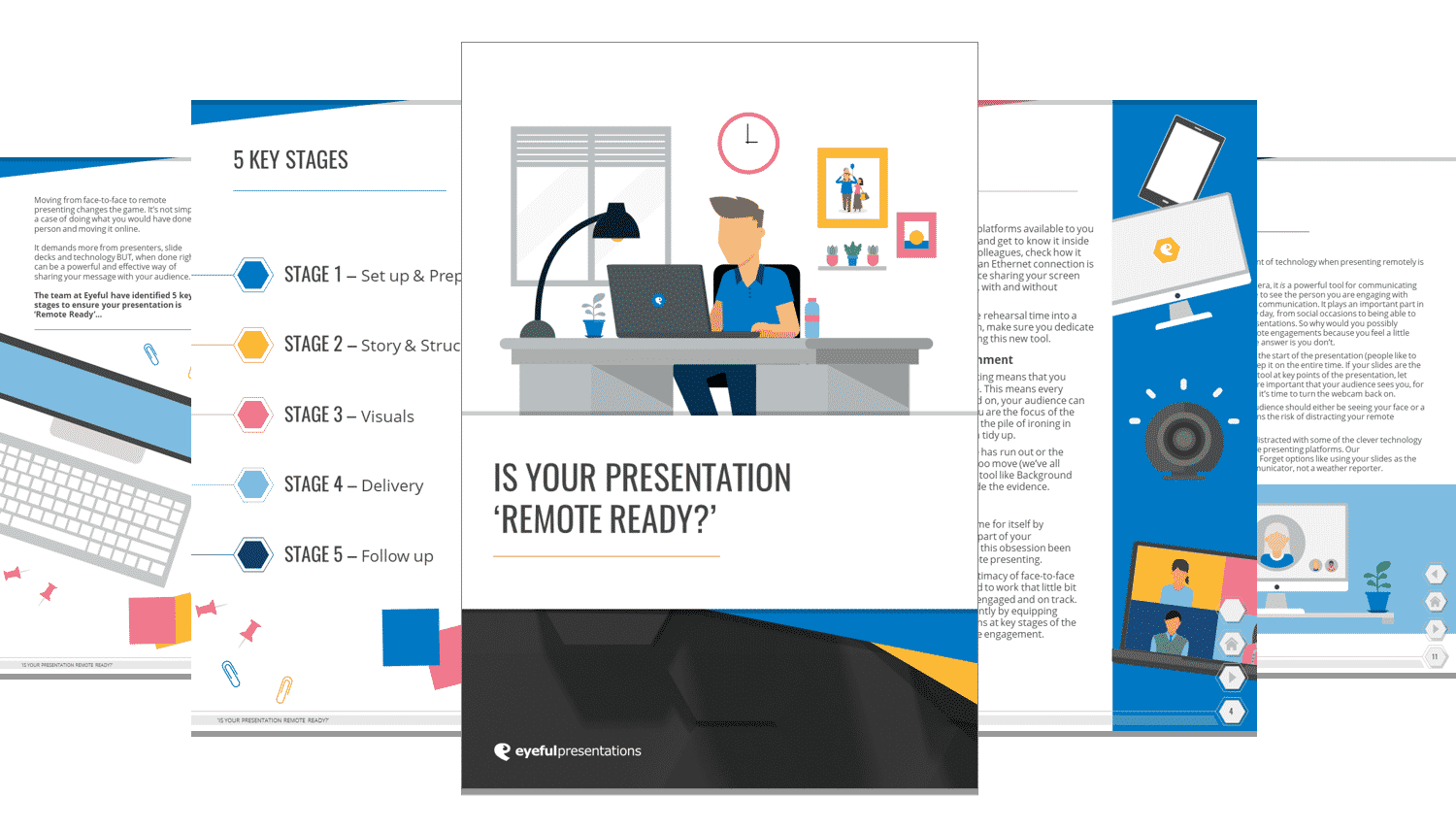We asked Eyeful’s MD, Simon Morton, to share some thoughts and ideas around sales presentations in the weird new world we find ourselves in. Here’s what he had to say…
Let’s face it, Coronavirus has cut through society and economy in ways that we just simply couldn’t have imagined weeks ago, let alone months ago. It’s changed the way that we work, and for salespeople, it’s completely changed the way that they engage with their audiences.
We’ve spent a lot of time over the last couple of weeks just working with customers in helping them make sure their presentations are ‘Remote Ready’.
 But frankly, certainly in sales, that really is just scratching the surface. We have a wonderful opportunity as sales presenters to actually think completely differently about the sales process.
But frankly, certainly in sales, that really is just scratching the surface. We have a wonderful opportunity as sales presenters to actually think completely differently about the sales process.
For example, think about your audience differently. Recently in our business, one of our sales guys was on the cusp of closing a very large and really interesting project with the MD of a pretty major business. And they were asking us to come in and change the presentation culture within their organisation. Something that we were all very excited about getting our teeth into. However, quite understandably, this MD is now staring down the barrel of some major changes within their organisation. It’s the furloughing, it’s the management of cashflow. It’s all of the things that if you run a business, you’re constantly thinking about at the moment.
So, to try and drive that project through, although it’s really important and will certainly be of value to them, at this point, simply didn’t make any sense. But what we could do, because we’d built the trust and the loyalty with this customer, is offer our support in other areas.
We provided them with a bunch of collateral that will support their team in making their own presentations ‘Remote Ready’. We also worked with the MD on a one-to-one basis to figure out how best to communicate internally some of the changes they are going through.
Questions like ‘What are your biggest concerns and can you support them?’ – there may not be any revenue in it, but if there is an opportunity to support, that really does put you in a very, very strong position going forward.
Other things include tools. Now, like I say, we’ve touched on the ability to make your presentation remote ready, and that’s a pretty straightforward thing, frankly. But we can go a little bit deeper than that. Presentations are getting shorter. And in my opinion, that’s great. 15 – 20 minute pitches are now pretty commonplace online, but that doesn’t mean that after that pitch, you just step back.
After that meeting, how are you able to sustain the engagement that you had with your prospects? And that may be with using elements of your presentation story in other ways, infographics, maybe a short video to follow up and summarise the key things that people agreed. Maybe there are hidden stakeholders that are still part of the sales cycle that you need to convince, but frankly, you can’t access now because the world has gone a little bit crazy.
And of course, this is a great opportunity for sales presenters to remember the basics around presenting. What is the message you want your audience to remember? Focus on that message. What is going to drive the call to action that is fundamentally underpinning the entire presentation process?
In summary, yep, it’s tough. It’s always been tough in sales, but probably never tougher than it is today. But the onus is on you to make sure that every opportunity you have is delivered to the absolute maximum quality. That means rehearsing properly. That means thinking differently about your audience, and engaging with them in new ways to prompt the action that both you, and they, will benefit from.
I hope, if nothing else, this has sparked some interesting ideas and discussions internally at your end. If you’d like to hear any more about how we’re helping other sales organisations, all you need to do is reach out and we’ll be more than happy to have a chat. Thanks again for your time.




